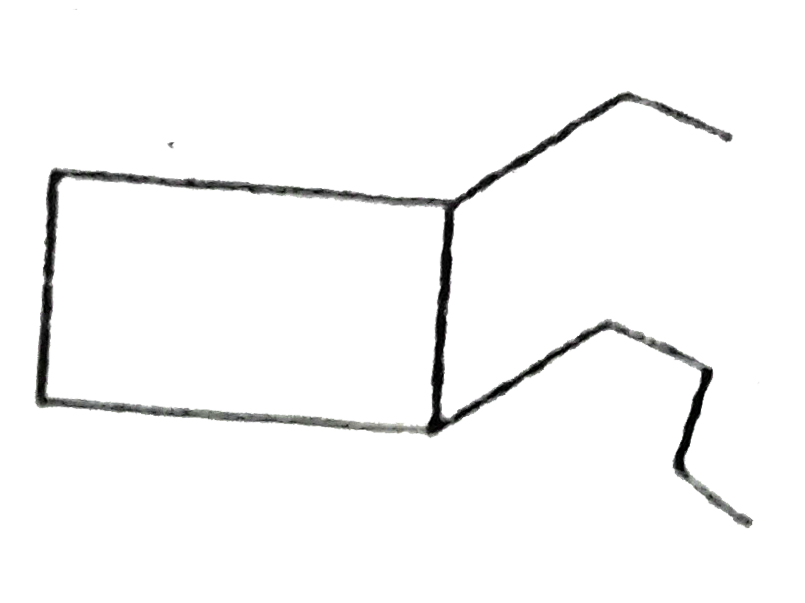Give the IUPAC ame of iodoform and give its preparation using acetone, sodium hydroxide and iodine.
To solve the question, we will break it down into two parts: identifying the IUPAC name of iodoform and explaining its preparation using acetone, sodium hydroxide, and iodine.
Step 1: Identify the IUPAC Name of Iodoform
Iodoform is a compound with the chemical formula CHI₃. It is derived from methane (CH₄) where three hydrogen atoms are replaced by iodine atoms.
IUPAC Name: The IUPAC name of iodoform is triiodomethane.
Step 2: Preparation of Iodoform using Acetone, Sodium Hydroxide, and Iodine
The preparation of iodoform involves a series of reactions starting with acetone (CH₃COCH₃), sodium hydroxide (NaOH), and iodine (I₂).
1. Deprotonation of Acetone:
- Sodium hydroxide acts as a base and removes a proton (H⁺) from the methyl group of acetone, forming an enolate ion.
- Reaction:
CH3COCH3+NaOH→CH3C(O−)CH2+H2O
2. Formation of Monoiodoacetone:
- The enolate ion attacks iodine (I₂), leading to the substitution of one hydrogen atom with iodine.
- Reaction:
CH3C(O−)CH2+I2→CH3C(O−)CHI+I−
3. Formation of Diiodoacetone:
- The newly formed iodoacetone can undergo another substitution reaction where another hydrogen is replaced by iodine.
- Reaction:
CH3C(O−)CHI+I2→CH3C(O−)CHI2+I−
4. Formation of Triiodoacetone:
- The process continues, and the final substitution leads to the formation of triiodoacetone.
- Reaction:
CH3C(O−)CHI2+I2→CH3C(O−)CHI3+I−
5. Elimination of Iodoform:
- The triiodoacetone undergoes a reaction where the hydroxide ion (OH⁻) attacks the carbon, leading to the elimination of iodoform (CHI₃) and forming a carboxylate ion.
- Reaction:
CH3C(O−)CHI3+OH−→CH3CO−+CHI3
Final Result
The final product of this series of reactions is iodoform (CHI₃), which can be isolated from the reaction mixture.
Iodoform is a compound with the chemical formula CHI₃. It is derived from methane (CH₄) where three hydrogen atoms are replaced by iodine atoms.
The preparation of iodoform involves a series of reactions starting with acetone (CH₃COCH₃), sodium hydroxide (NaOH), and iodine (I₂).
- Sodium hydroxide acts as a base and removes a proton (H⁺) from the methyl group of acetone, forming an enolate ion.
- Reaction:
CH3COCH3+NaOH→CH3C(O−)CH2+H2O
- The enolate ion attacks iodine (I₂), leading to the substitution of one hydrogen atom with iodine.
- Reaction:
CH3C(O−)CH2+I2→CH3C(O−)CHI+I−
- The newly formed iodoacetone can undergo another substitution reaction where another hydrogen is replaced by iodine.
- Reaction:
CH3C(O−)CHI+I2→CH3C(O−)CHI2+I−
- The process continues, and the final substitution leads to the formation of triiodoacetone.
- Reaction:
CH3C(O−)CHI2+I2→CH3C(O−)CHI3+I−
- The triiodoacetone undergoes a reaction where the hydroxide ion (OH⁻) attacks the carbon, leading to the elimination of iodoform (CHI₃) and forming a carboxylate ion.
- Reaction:
CH3C(O−)CHI3+OH−→CH3CO−+CHI3
The final product of this series of reactions is iodoform (CHI₃), which can be isolated from the reaction mixture.
Topper's Solved these Questions
- ALCOHOLS, PHENOLS AND ETHERSBOOK - PRADEEPCHAPTER - ALCOHOLS, PHENOLS AND ETHERSEXERCISE - ADDITIONAL QUESTIONS (LONG ANSWER QUESTIONS)
6 Videos
- ALCOHOLS, PHENOLS AND ETHERSBOOK - PRADEEPCHAPTER - ALCOHOLS, PHENOLS AND ETHERSEXERCISE - HIGHER ORDER THINKING SKILLS (QUESTIONS AND PROBLEMS WITH ANSWERS/SOLUTION)
5 Videos
- ALCOHOLS, PHENOLS AND ETHERSBOOK - PRADEEPCHAPTER - ALCOHOLS, PHENOLS AND ETHERSEXERCISE - ADDITIONAL QUESTIONS (VERY SHORT ANSWER QUESTIONS)
58 Videos
- ALDEHYDES, KETONES AND CARBOXYLIC ACIDS BOOK - PRADEEPCHAPTER - ALDEHYDES, KETONES AND CARBOXYLIC ACIDS EXERCISE - IMPORTANT QUESTIONS FOR BOARD EXAMINATION
29 Videos
Similar Questions
Knowledge Check
Give IUPAC name of Acetone
AEthanalBPropanoneCButanoneDPropanal.Iodoform is formed on warming iodine and sodium hydroxide with :
ACH3OHBC2H5OHCHCOOHDC2H6Assertion : Na2SO4 can be used as the starting material for the preparation of sodium carbonate and sodium hydroxide.
Reason : Sodium hydroxide is prepared by the treatment of milk of lime with sodium carbonate.AIf both assertion and reason are true and the reason is the correct explanation of the assertion.BIf both assertion and reason are true but reason is not the correct explanation of the assertionCIf assertion is true but reason is false.DIf assertion is false but reason is true.
Write two uses of sodium hydroxide.
View SolutionGive the preparation and uses of Teflon
View SolutionGive common names of sodium hydroxide and potassium hydroxide.
View SolutionEthanoic acid is treated with sodium hydroxide. Give balanced reaction.
View SolutionGive the reasons for the following:
(i) Iodoform is prepared by reacting acetone with hypoiodite and not with idodine. Explain.
(ii) Halogen acids readily combine with alkene to form addition products but fail to react with carbonyl compounds. Discuss.
View Solution


